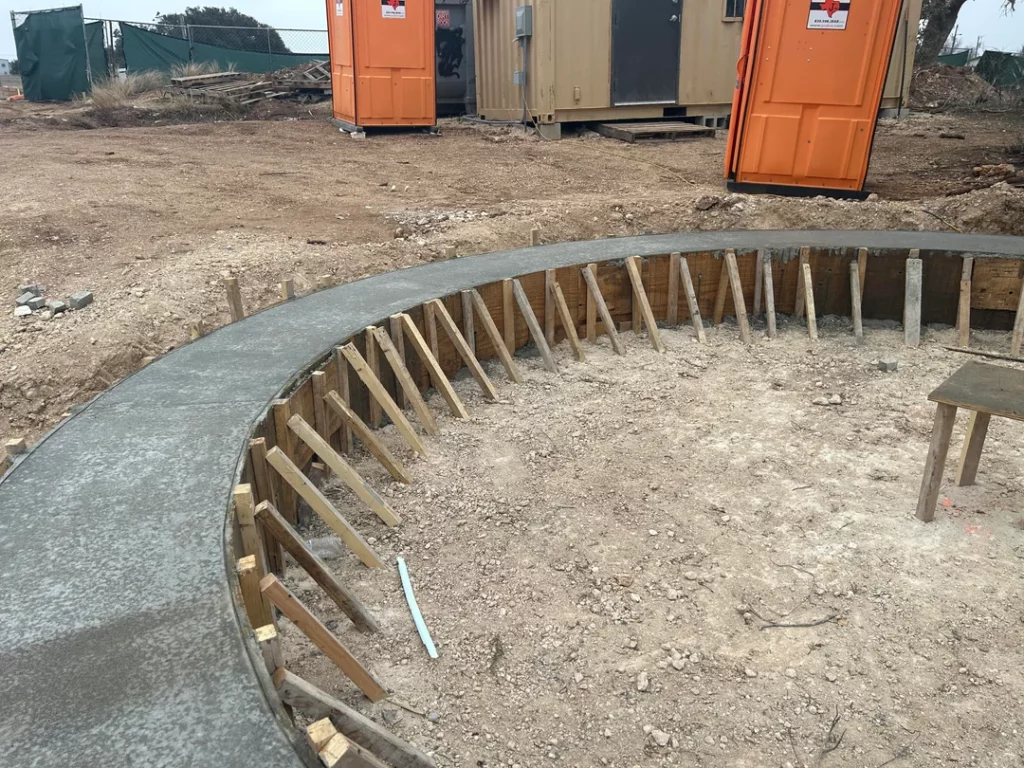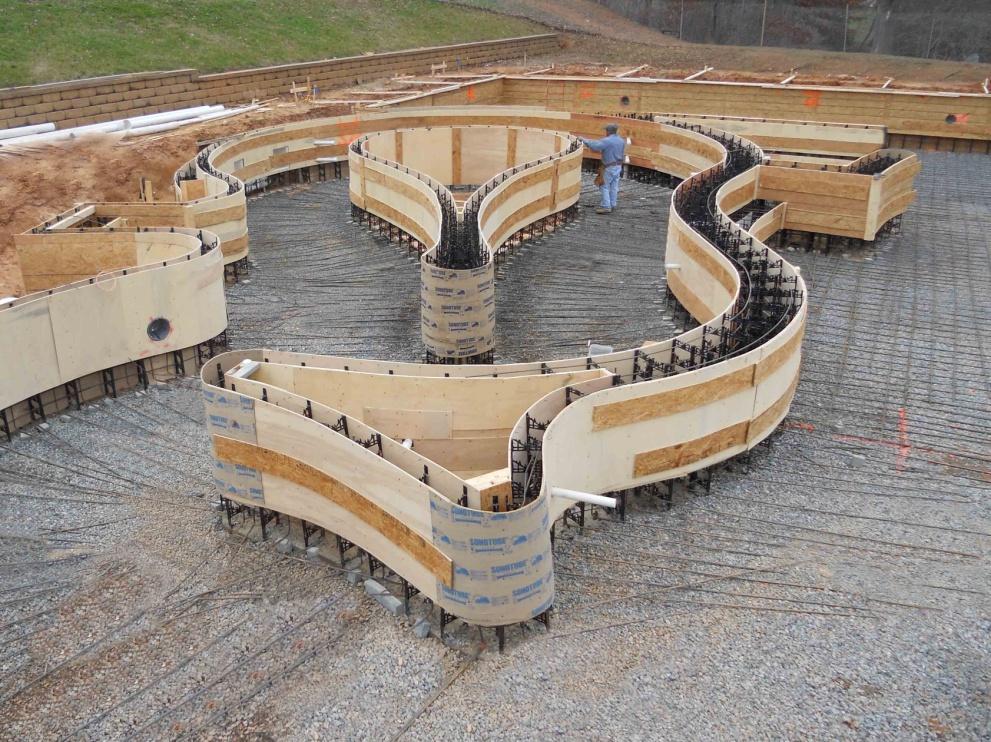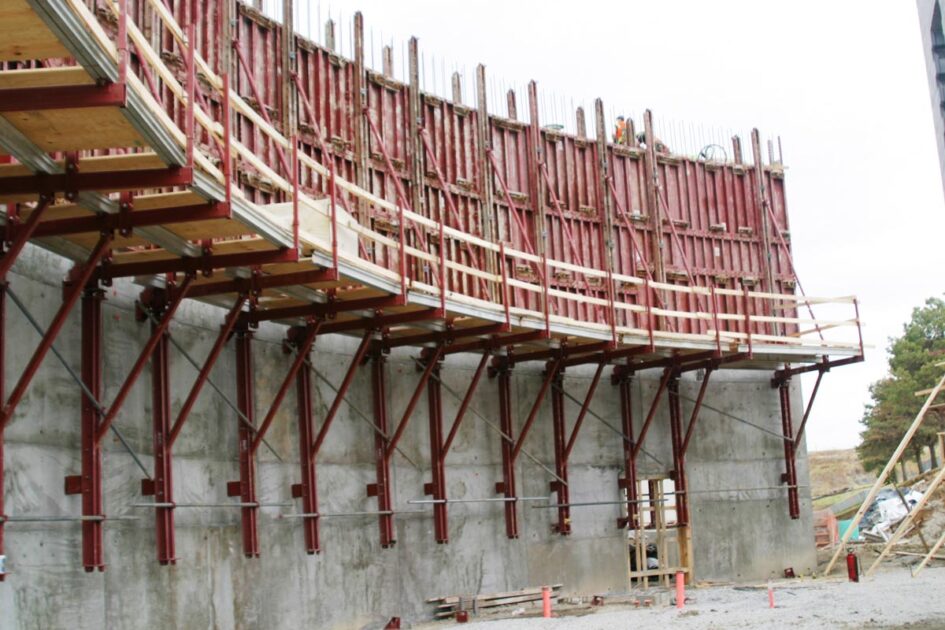The construction industry constantly seeks innovative and cost-effective techniques for creating unique and aesthetically pleasing structures. One such technique is the use of curved concrete forms, which adds a touch of elegance and artistic appeal to architectural designs. In achieving these intricate shapes, formwork plywood plays a crucial role, providing the necessary support and flexibility required for successful construction.
Understanding Formwork Plywood
Formwork plywood, also known as shuttering plywood, is a specialized type of f14 grade plywood that is designed and engineered to withstand the pressure and forces exerted during the pouring and curing of concrete. It is a key component of formwork systems, which are temporary structures used to shape and support freshly poured concrete until it sets and becomes self-supporting.
Formwork plywood is characterized by its high strength, durability, and dimensional stability. It is typically made from multiple layers of thin wood veneers, bonded together using waterproof adhesive. This construction gives formwork plywood the strength and rigidity necessary to resist the immense weight and pressure of wet concrete. Click here to get why formwork plywood is essential for your building needs.

Definition and Characteristics of Formwork Plywood
Formwork plywood is a type of plywood specifically designed for use in construction formwork systems. It possesses certain characteristics that make it ideal for this purpose. Firstly, formwork plywood is made from high-quality hardwood or softwood veneers, which are carefully selected for their strength and durability. This ensures that the plywood can withstand the rigors of the construction site and provide long-lasting support to the concrete.
Another important characteristic of formwork plywood is its ability to resist moisture and water penetration. Concrete is a highly alkaline material, and as it cures, it releases moisture. Formwork plywood is treated with special chemicals or coatings to prevent moisture absorption, ensuring the plywood maintains its strength and dimensional stability when in contact with wet concrete.
Additionally, formwork plywood is designed with precision to ensure that it meets the specific requirements of different construction projects. It is available in various thicknesses, ranging from 12mm to 21mm, allowing builders to choose the appropriate plywood thickness based on the load-bearing capacity needed for their specific application. This versatility makes formwork plywood suitable for a wide range of construction projects, from small residential buildings to large-scale commercial structures.
Types of Formwork Plywood
There are several types of formwork plywood available in the market, each with its own specific properties and advantages. One common type is phenolic film-faced plywood, which has a smooth, phenolic resin-coated surface that provides excellent resistance to moisture and wear. This type of plywood is highly durable and can be reused multiple times, making it cost-effective for repetitive formwork applications.
Another type of formwork plywood is laminated veneer lumber (LVL) plywood, which is made by gluing together multiple layers of thin wood veneers with their grain orientations stacked parallel to one another. LVL plywood has exceptional strength and stiffness, making it suitable for heavy-duty formwork and demanding construction projects. Its high load-carrying capacity allows for larger concrete pours and enables the creation of complex curved forms.
Furthermore, there is also marine-grade formwork plywood available, which is specifically designed to withstand exposure to water and moisture. This type of plywood is often used in construction projects near bodies of water or in areas with high humidity levels. Its superior resistance to water damage ensures that the formwork remains structurally sound even in challenging environmental conditions.
In conclusion, formwork plywood plays a crucial role in the construction industry, providing the necessary support and stability for concrete during the pouring and curing process. Its strength, durability, and resistance to moisture make it an essential component of formwork systems, enabling the creation of safe and reliable structures.
The Science Behind Curved Concrete Forms
Creating curved concrete forms involves a precise and intricate process that relies on the interplay between formwork plywood and the properties of concrete. Understanding the science behind curved concrete forms is essential for achieving the desired shape and structural integrity.
The Process of Creating Curved Concrete Forms
The creation of curved concrete forms begins with the careful selection and installation of the appropriate formwork plywood. The plywood panels are cut and shaped to match the desired curvature of the concrete structure. Precision and attention to detail are paramount in ensuring a seamless and accurate fit.
But did you know that the process of selecting the right formwork plywood goes beyond just its shape? The quality and grade of the plywood also play a crucial role in the success of creating curved concrete forms. High-quality plywood with minimal defects and a smooth surface can help achieve a more uniform and aesthetically pleasing finish.
Once the formwork plywood is in place, steel reinforcing bars, known as rebars, are strategically positioned to provide added strength and support to the concrete. These rebars are bent to match the curvature of the formwork plywood, further enhancing the structural integrity of the concrete structure.
But what happens if the rebars are not properly aligned with the curvature of the formwork plywood? This misalignment can lead to uneven distribution of forces within the concrete, potentially compromising its strength and durability. That’s why careful measurement and precise bending of the rebars are crucial steps in the process of creating curved concrete forms.
Finally, the concrete mix is poured into the formwork, gradually filling the curved space. Vibrators may be used to remove air bubbles and ensure proper compaction of the concrete. As the concrete cures and hardens, it takes on the shape of the formwork plywood, resulting in a beautiful and functional curved structure.
Factors Influencing the Shape of Concrete Forms
The shape of curved concrete forms is influenced by several factors, including the radius of curvature, the thickness of the concrete, and the type and condition of the formwork plywood. The radius of curvature determines the degree of curvature and the overall shape of the structure. Smaller radii result in tighter curves, while larger radii produce gentler curves.
But did you know that the radius of curvature can also affect the structural stability of the curved concrete form? A smaller radius may require additional reinforcement and support to prevent the structure from collapsing under the weight of the concrete. Engineers and architects carefully analyze the radius of curvature to ensure the safety and longevity of the curved concrete form.
The thickness of the concrete also plays a role in shaping the final form. Thicker concrete requires more extensive formwork support and may necessitate the use of thicker formwork plywood to withstand the increased weight and pressure.
Additionally, the type and condition of the formwork plywood are crucial considerations as well. Sturdy and well-maintained plywood ensures accurate and consistent formwork, while damaged or worn-out plywood can result in uneven surfaces and compromised structural integrity.
So, the next time you admire a beautifully curved concrete structure, remember the intricate science and attention to detail that went into its creation. From the selection of formwork plywood to the precise bending of rebars, every step in the process contributes to the strength, functionality, and aesthetic appeal of curved concrete forms.
The Interplay Between Formwork Plywood and Concrete
The relationship between formwork plywood and concrete is symbiotic, as each element relies on the other to achieve a successful outcome. The characteristics of formwork plywood directly influence the properties and appearance of the final concrete form.
How Formwork Plywood Influences Concrete Forms
The smooth and even surface of formwork plywood helps create a finished concrete form free from blemishes and imperfections. Its dimensional stability prevents warping or bowing, ensuring that the concrete maintains the desired shape and form. Additionally, the high-quality waterproofing treatments used on formwork plywood reduce the risk of concrete discoloration or staining.
Formwork plywood also acts as a barrier, preventing concrete from seeping through the joints or edges of the formwork. This ensures clean and well-defined edges, contributing to the overall aesthetic appeal of the curved structure.

Challenges and Solutions in Using Formwork Plywood
Despite its many advantages, working with formwork plywood for curved concrete forms does present certain challenges. One such challenge is achieving a consistent and smooth surface finish. Any imperfections or inconsistencies in the plywood can transfer to the concrete, resulting in a less-than-desirable finish.
To overcome this challenge, meticulous attention must be paid to the selection and preparation of the formwork plywood. Regular inspections and maintenance of the plywood are essential to ensure its integrity and functionality throughout the construction process.
Another challenge is the proper removal and reusability of the formwork plywood. Careful handling and dismantling techniques must be employed to prevent damage to the plywood and ensure its future use in subsequent projects. Proper storage and protection against moisture, pests, and other potential hazards are paramount to preserving the quality and longevity of the formwork plywood.
Furthermore, it is worth noting that the choice of formwork plywood can also impact the overall sustainability of a construction project. Opting for plywood made from sustainably sourced materials or using recycled plywood can significantly reduce the environmental impact of the project. This consideration aligns with the growing trend in the construction industry towards more eco-friendly practices.
In addition to the sustainability aspect, the type of formwork plywood used can also affect the construction timeline. Some plywood options offer faster assembly and disassembly, which can help expedite the overall construction process. This time-saving benefit can be particularly advantageous in projects with tight deadlines or when multiple concrete forms need to be created simultaneously.
Moreover, advancements in formwork plywood technology have led to the development of specialized plywood for specific applications. For instance, there are now plywood options available that are specifically designed for curved or intricate concrete forms. These specialized plywood types offer enhanced flexibility and durability, ensuring that the formwork can withstand the stresses and strains associated with complex designs.
Lastly, it is important to consider the cost implications of using formwork plywood. While high-quality plywood may come with a higher price tag, its durability and reusability can offset the initial investment. By carefully evaluating the project requirements and considering the long-term benefits, contractors can make informed decisions regarding the most cost-effective formwork plywood options.
The Impact of Formwork Plywood on the Construction Industry
The use of formwork plywood in achieving curved concrete forms has revolutionized the construction industry, opening up a world of design possibilities and pushing the boundaries of architectural creativity. Its impact extends beyond the realm of aesthetics, offering numerous advantages to construction professionals.
Advantages of Using Formwork Plywood in Construction
Formwork plywood provides exceptional strength and durability, enabling the construction of robust and long-lasting concrete structures. Its versatility allows for the creation of complex and intricate shapes that would be challenging and expensive to achieve using traditional construction methods.
The reusability of formwork plywood significantly reduces material waste and promotes sustainable construction practices. By efficiently utilizing formwork plywood for multiple projects, construction professionals can reduce costs while minimizing their environmental footprint.
Future Trends in Formwork Plywood Use
As the demand for unique and eye-catching architectural designs continues to grow, the use of curved concrete forms and formwork plywood is expected to become even more prevalent. Advancements in manufacturing techniques and the development of new, innovative materials are likely to further enhance the capabilities and performance of formwork plywood.
Moreover, the integration of digital tools and technologies, such as computer-aided design (CAD) and 3D modeling, will streamline the process of designing and fabricating formwork plywood, making it easier for architects and engineers to envision and construct curved concrete forms.
Conclusion
In conclusion, formwork plywood plays a critical role in achieving curved concrete forms, providing the necessary support and flexibility for the construction of unique and visually striking structures. Understanding the characteristics and types of formwork plywood, as well as the science behind curved concrete forms, is essential for successful construction. By harnessing the interplay between formwork plywood and concrete, construction professionals can push the boundaries of architectural design and shape the future of the construction industry.

Leave a Reply